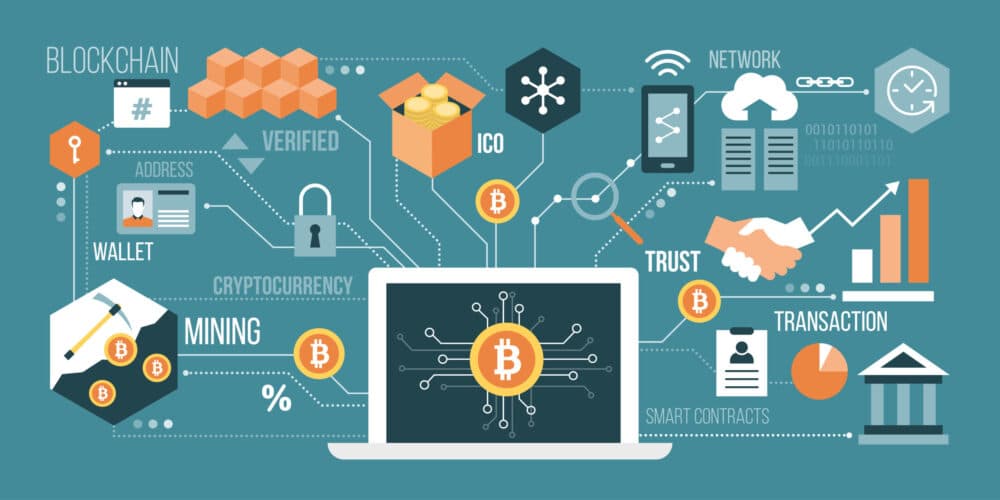
JPMorgan Chase kicked off earnings season on a strong note this morning. The Wall Street megabank reported a surge in dealmaking that boosted the bottom line.
While earnings usually set the tone for markets, Wall Street’s “too-big-to-fail giants” may take a backseat to Congress.
That’s because the legislative calendar is booked for legislation on all things crypto.
And the market likes what it’s hearing so far – as evidenced by bitcoin popping to new all-time highs over $120,000.
Currently, there’s a trifecta of legislation coming up for a vote, all of which bodes well for crypto adoption – and with it, prices.
There’s the CLARITY Act, which determines which federal agency gets to make and enforce the rules.
There’s the GENIUS Act, which is critical for stablecoin adoption.
And there’s the CBDC Anti-Surveillance State Act, which would reject a programmable form of digital money that would then be mandated for use.
We’ve touched on the stablecoin idea in Grey Swan in recent weeks. Among the legislation coming up this week, however, the most important to your financial freedom is likely the CBDC Anti-Surveillance State Act.
Why? Its roots go back to the last time the dollar was tied to gold…
 The 1971 Moment Will Never Arise
The 1971 Moment Will Never Arise
In 1971, Richard Nixon closed the gold window for the U.S. dollar.
Since then, we’ve lived in an age of purely fiat currencies.
But that’s not the only significant monetary development that year.
It’s also the year that a group of government-connected thinkers met at the Center for Strategic and International Studies (CSIS).
If you’ve never heard of the CSIS, I can’t blame you. You and I would never get an invitation to such an exclusive club.
The center conducts policy studies and strategic analyses of political, economic, and security issues throughout the world. And its members are a “who’s who” of the U.S. political and financial establishment.
Current CSIS board members include former House Speaker Paul Ryan, billionaire investor Ray Dalio, and, until he passed away, Henry Kissinger.
Past members have included Madeleine Albright and Antony Blinken. And every president since Richard Nixon has spoken to this club.
So when the CSIS conducts a “war games” type study, it’s a big deal. And one closely monitored by the political elite.
That’s exactly what happened in its 1971 meeting.
Over two days in October 1971, the CSIS “war gamed” this scenario: Imagine you’re the KGB.
You want to better monitor the population of the Soviet Union. But it has to be as unobtrusive as possible.
How do you go about it?
The answer they came up with didn’t involve more wiretaps, secret informants, or more gulags. Rather, they looked at a technology that the U.S. was just starting to roll out: credit card networks.
Credit card payments, unlike their cash or check counterparts, could provide real-time monetary transactional data.
Credit card networks would show who was making a purchase, the location of the purchase, and how much money they were spending.
A country’s ability to collect that data and monitor it in real time could make surveillance much easier. Unusual transactions could be immediately flagged for a deeper investigation…
And it wouldn’t be an obvious source of intrusion.
At its extreme, if everyone in the Soviet Union moved to a credit card system controlled by the government, then it would monitor every transaction in real time. The notorious black markets in the country operating with cash could become a thing of the past.
The Soviets never built that technology. The totalitarian regime dissolved on December 26, 1991 – exactly 20 years after the CSIS financial war game.
But that level of financial surveillance is possible with a central bank digital currency (CBDC).
Apple’s Secret Weapon to Disrupt
a $9 Trillion Industry
Apple just fired a shot at a $9 trillion sector — not with a new iPhone, but with its most disruptive project since the smartphone. One tiny supplier — still trading near $30 — sits quietly at the center of this bold move. Full details here.
 How a CBDC Is Anti-Freedom Money
How a CBDC Is Anti-Freedom Money
At its core, a central bank digital currency is faster than traditional payment systems. Even the U.S. dollar can take days to settle in international trade – or if you’re still cutting checks.
A CBDC can allow for tracking in real time. And, what’s more, it’s programmable.
What does that mean?
It could mean a significant threat to your freedom.
Imagine a future where a militant vegan political party takes power. They could program a digital dollar to limit how much you spend each month on meat – perhaps even none. Buying too much ammo, whether for hunting or not? Those dollars are void for that transaction.
Money could even be programmed to come with a time limit. A government benefit to be spent on food could expire within 30 days. That’s one way to ensure people buy food with their digital dollars.
But it also means it’s impossible to save for the future – and with it, be free from the grasp of government.
That’s why it’s critical to keep governments from creating and requiring the use of central bank digital currencies.
The power to make changes and corrupt the monetary system is bad enough under a fiat standard – where bankers simply flood the system with new money every time it’s on the brink of collapse.
 FedNow, CBDC Later?
FedNow, CBDC Later?
Two years ago, the Federal Reserve released a FedNow token, designed to cut down transaction time, which ran into days.
It’s not a CBDC, but it laid the groundwork for one.
The CBDC Anti-Surveillance State Act, if passed, will ensure that this program doesn’t morph into anything ominous, at least right away.
But there’s always another crisis coming down the pike. And governments always sound reluctant at first to claim emergency powers, at least until a fearful populace demands they do so.
So don’t count out a CBDC yet – but at least this is one crisis that can be kicked down the road a few years.
For now, crypto investors are finally getting Congress to deliver on the regulatory clarity they’ve wanted for years – and it points to more gains for crypto in the months ahead.
But it will require ongoing vigilance to ensure the crypto dream doesn’t become a nightmare.
~ Andrew
P.S. With a variety of pro-crypto legislation likely to pass this week, it’s no surprise that higher prices are likely ahead for bitcoin. It may even kick off an altcoin season, where laggards like Ethereum finally catch an uptrend.
But gold can still be a winner here, as an analogue asset that’s immune from the prying eyes of a surveillance state – provided you buy now, not after a CBDC comes online.
If you think we’re running out of reasons to buy gold or bitcoin, think again. Preserving your right to financial privacy in your transactions still makes gold attractive to hold, above and beyond its inflation-protection power – and as this morning’s CPI data showed, inflation remains sticky with a 2.7% annualized rate.
Plus, the gold story is just one part of a greater commodity boom. Tech giant Apple just invested $500 million in MP Materials, the U.S.-based rare earth metal developer that the U.S. invested in just last week.
There’s still a lot more to come in commodities, and our Grey Swan members have already been in ahead of these early moves.
Your thoughts? Please send them here: addison@greyswanfraternity.com



